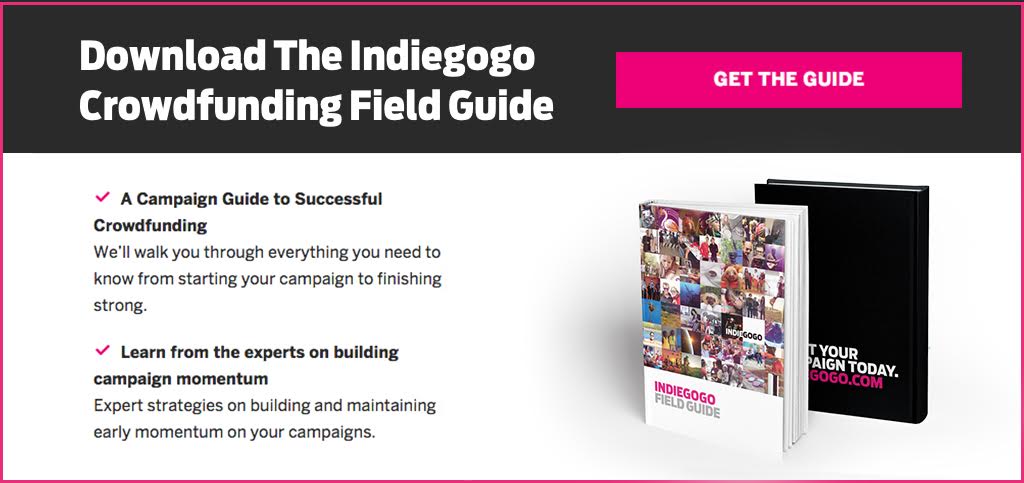
At Indiegogo, video is an essential part of running a successful campaign. Campaigns that use video see an average 114% more fund generation than those without. We all get the value of using videos to share our stories, but we also understand that creating a compelling video can be difficult for some. A lot of factors play into creating the perfect video. We need resources and equipment, some knowledge on shooting videos and the confidence to appear on camera.
One of the major challenges that many campaigners face is how to get started with their video creation and the resources it takes to get things done. In this post, we want to share some helpful tips on how to start creating your videos and overcome the hurdles of being camera shy. Let’s dive in.
- Learn Your Equipment Needs. Video and audio equipment are going to be at the center of your video creation. These are the tools you’ll need to get the job done well and tell your story in a visually appealing way. Researching camera and audio equipment can be overwhelming. There are hundreds of options available to consumers that range anywhere from an Iphone to a 3D camera. For the video you are creating, you don’t need much. We suggest the following pieces of equipment for shooting video: A DSLR camera capable of shooting HD video, a tripod, a directional microphone and a set of lights for effect. If you’ve already got your hands on these items then you’re good to go!
- Rent Your Equipment. Yes! Video and audio equipment can be very expensive. Depending on the quality of the equipment you buy, you can easily spend thousands of dollars to shoot your video. Instead of going out and buying shiny new cameras and mics, check out your local video and photography rental shops. They carry a variety of professional equipment that will work for all your needs. Also, renting equipment is much cheaper if you’re only planning to shoot a couple of videos over the weekend.
- Find a Style That Tells Your Story. Creating a great video always comes back to research. You’ll notice that videos are shot and edited in a variety of cinematic styles and each style can tell the same story very differently depending on the tone, rhythm and pace of that style. Do the research and find videos with a style that you think fit your campaign best. Take notes on the mood of the video – was it happy and upbeat or serious and inspirational? Pay attention to the music in the background and how that makes you feel. These are things you will need to consider when creating your own video.
- Learn How to Use Video Editing Software. Shooting your video is just half the work, the post-production is where you’ll turn all your shots into a story that you can share. Take the time to learn how to use editing software. There are a variety of options like Final Cut Pro, Adobe Premiere and many others. Research the needs of your final product and find software that meets those requirements. You might learn that the style of your video and the technical needs can all be achieved in iMovie or even an Iphone video editor. Which ever you decide, get intimately acquainted with how the tools work and its capabilities.
Now that we’ve reviewed some tips on the video creation, let’s talk about getting you in front of the camera. We’ve found that campaigners who are featured in their own videos help build trust with their community and increase engagement. We also know that many people tend to be video-phobic and don’t particularly enjoy being on camera. Here’s the good news, unlike the fear of speaking live in front of a group, creating a video means that you have absolute control over what your audience sees. You don’t get one take, you get as many as you need to make yourself comfortable. Taking part in your pitch video gives you a channel to connect with your audience and share your vision with them. It will take time, but your supporters and contributors will appreciate it.
- Play to Your Strengths. You have a great idea and that’s one of your strengths. It’s not enough to research what other people are doing well. It’s using that information to help you showcase what it is that you do well. Do you know who the best salespeople are? They’re the people who really believe in their products. Really what you’re talking about here is something you’re excited about, which means you’re starting out way ahead of just anyone selling a product for profit. You’re already a believer.
- Showing Your Best Self. You’re going to be more confident and comfortable in front of the camera if you feel good about yourself. Choose the best colors to complement your eyes or skin tone, choose clothes that make you feel confident and choose a setting that showcases what you’re talking about. You can also do test shoots in different locations and clothing to determine what comes across better on screen. The camera can make you look different than you look in real life, which is why it’s important to really pay attention to things like lighting and background.
- Use a Script. Unless you’re an exceptionally gifted speaker, you probably don’t want to just wing your video. Write yourself a script and practice it to make sure that your inflections and word choices sound natural. It’s also a good idea to memorize it entirely so you’re not reading off a cue card.
- Talk to a Person. Most people get pretty nervous talking to a camera. Genuine facial expressions are often a reaction to the emotions from the people you’re talking to, which makes working directly with a camera pretty daunting if you’re not a seasoned actor. For most people, it’s more comfortable to have someone you know and trust behind the camera so that you can focus on them when you’re talking, making your expressions more realistic and engaging. The added benefit is that a trusted friend or coworker can give you feedback to change things that aren’t working.
Remember, too, that you’ll want to show more than just your own face in your video. You might include illustrations, some of your hard earned research or pictures to capture your audience’s attention. These tips should minimize the anxiety over your own screen time and help you create the best pitch video to generate engagement. Happy shooting!



